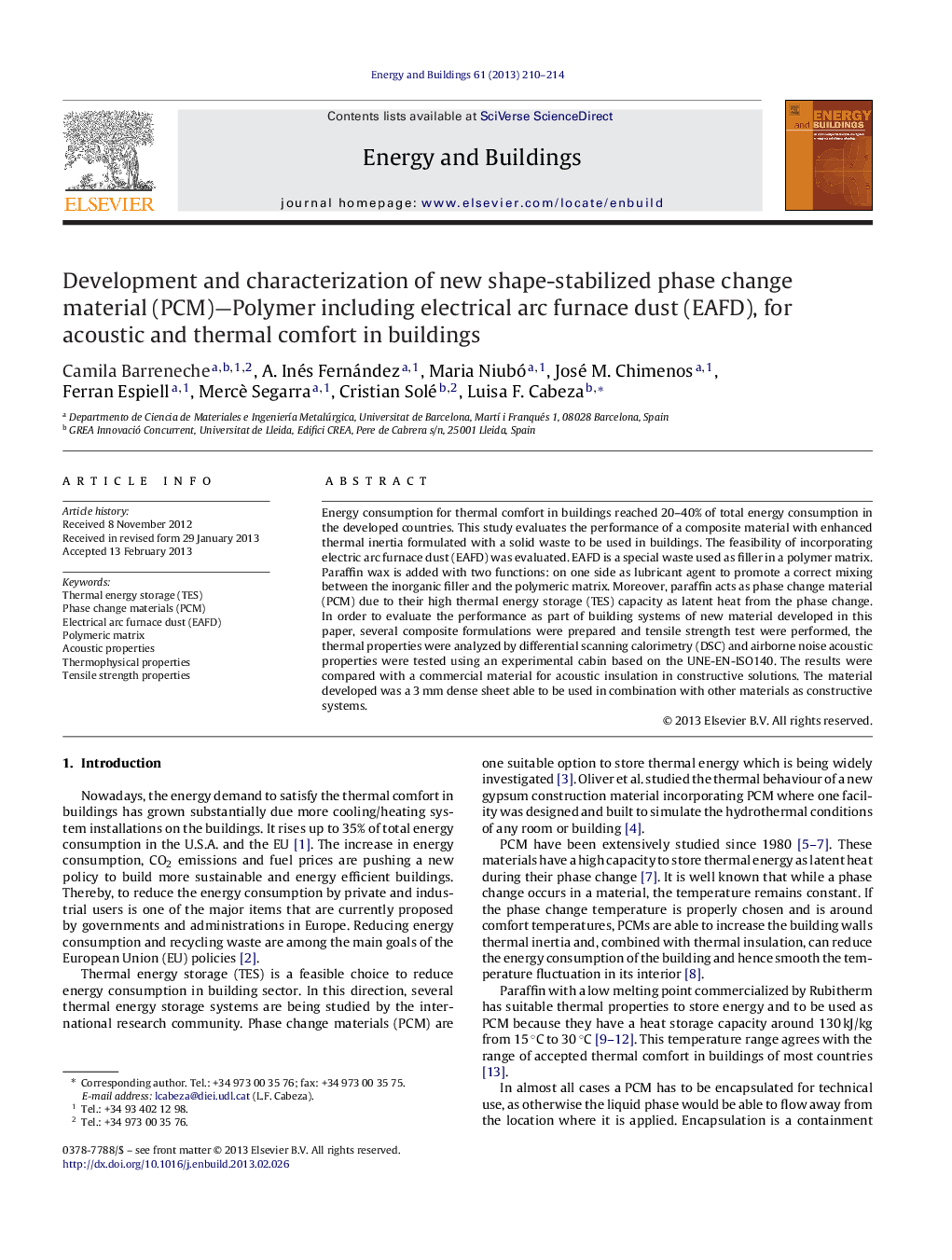| Article ID | Journal | Published Year | Pages | File Type |
|---|---|---|---|---|
| 263455 | Energy and Buildings | 2013 | 5 Pages |
Energy consumption for thermal comfort in buildings reached 20–40% of total energy consumption in the developed countries. This study evaluates the performance of a composite material with enhanced thermal inertia formulated with a solid waste to be used in buildings. The feasibility of incorporating electric arc furnace dust (EAFD) was evaluated. EAFD is a special waste used as filler in a polymer matrix. Paraffin wax is added with two functions: on one side as lubricant agent to promote a correct mixing between the inorganic filler and the polymeric matrix. Moreover, paraffin acts as phase change material (PCM) due to their high thermal energy storage (TES) capacity as latent heat from the phase change. In order to evaluate the performance as part of building systems of new material developed in this paper, several composite formulations were prepared and tensile strength test were performed, the thermal properties were analyzed by differential scanning calorimetry (DSC) and airborne noise acoustic properties were tested using an experimental cabin based on the UNE-EN-ISO140. The results were compared with a commercial material for acoustic insulation in constructive solutions. The material developed was a 3 mm dense sheet able to be used in combination with other materials as constructive systems.
► Evaluation of a composite material formulated with a solid waste and PCM to be used in buildings. ► The new composite is developed to have higher thermal inertia and good acoustic properties. ► Mechanical, thermal and acoustic of the new composite properties are evaluated. ► The new material is compared with a commercial product suitable for acoustic insulation. ► The material developed enables encapsulate PCM and EAFD obtaining 3 mm dense sheets.
